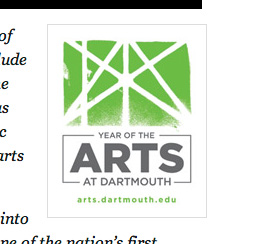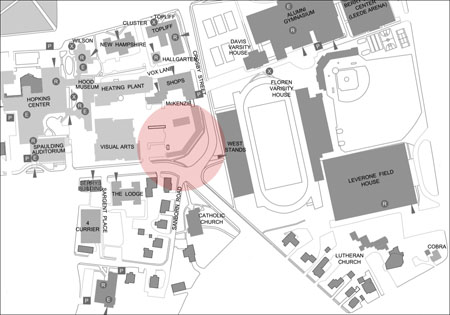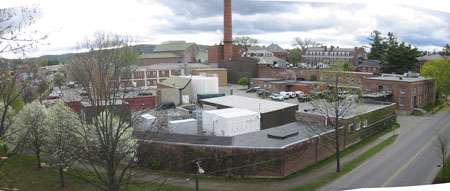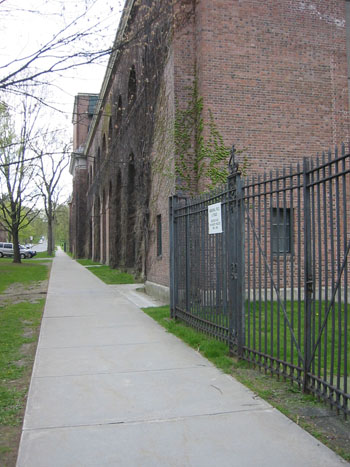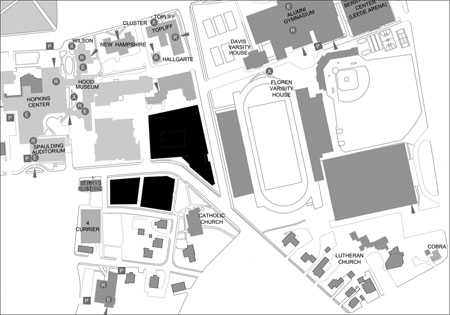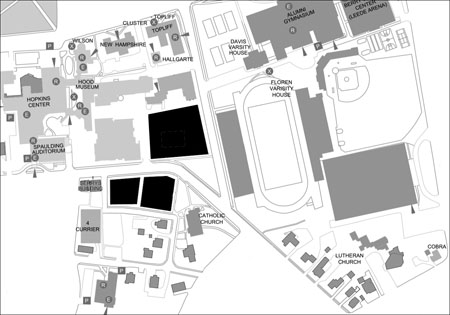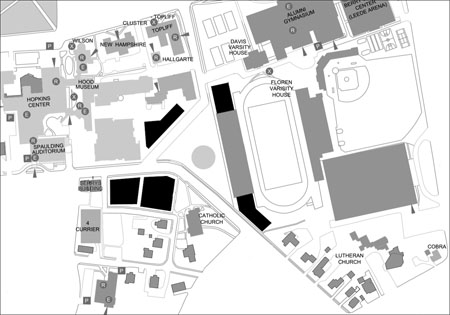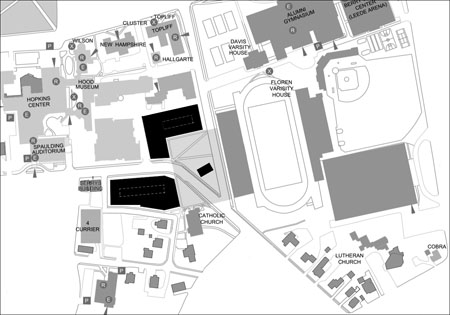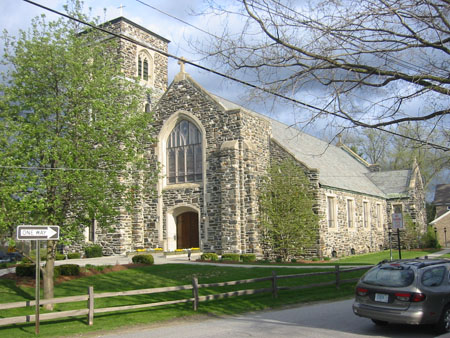-
An update of the “North Block” golf course development idea: Take a look at the Perkins + Will plan for the Poplar Point Development In Washington, D.C. Naturally Dartmouth wouldn’t need this density or scale, but it could learn from the extension of the existing street grid to form irregular quadrangular blocks; the treatment of the edge condition (the Anacostia River); and the accommodation of streams flowing through the site.
-
An update of the Hop expansion post: Of course! The new theater and entrance facade represent the final realization of Larson’s old 1940s Hop designs. In this post, a still image from a college video shows how Larson wanted to put a theater and a major entrance to the Hopkins Center on what was then College Street. And the Dartmouth has an article on the Boora project.
-
I did not learn until recently that this memorable window, visible on the way to Hanover from West Leb, is called a “Vermont window” or a “witch window” (Wikipedia):
-
Dartmouth has been phasing out the “@alum.dartmouth.org” accounts and assigning everyone, past and present, an “@dartmouth.edu” address (only the address, not an account). This is neater than the old dual system where students had one address/account and alumni another. When the “@alum.dartmouth.org” accounts came in (during 1995 or 1996?) they seemed like an awkward solution. The rationale for creating the new domain was that Dartmouth was barred (by its interpretation of the government’s pre-ICANN rules, one supposes) from using the “.edu” domain for accounts assigned to anyone but employees and students. Yet Harvard came out with its “@post.harvard.edu” domain around that time, so it is hard to see that as the reason.
Although it was fun to use Blitzmail after college, the need for a personal, ISP-independent email account was soon satisfied more effectively on the Web by Hotmail (1996) and Yahoo Mail (1997). Students responded with WebBlitz (1998 or 1999?) but I don’t recall that it prevented the alumni accounts from slipping into some obscurity. The susceptibility of the alumni accounts to great volumes of spam did not help.
-
The Rauner Blog has a post on Sgt. Allen Scott Norton of WWI with photos of the trenches dug on the future site of Leverone Field House or Red Rolfe Field.
-
The Planner’s Blog has a post on a new war memorials map.
-
Finally a photo of new Hop entrance below the grand ballroom — and the ever-shrinking Zahm Courtyard. It is included in the war memorial map.
-
The College Steward was a charter office first held by Ebenezer Brewster, who established the tavern that preceded the Inn. I’ve wondered if the office could be revived, and whom it should be given to. Contemporary college statutes from England (Downing College Cambridge, published in 1800, in Google Books) suggest that a steward was the head of dining services:
STATUTE XI.
OF THE STEWARD. THERE shall also be one Steward appointed annually by the Master, from among the Professors and Fellows, to direct every thing which relates to the Commons and Sizings to be served in the hall at dinner and supper, and the wine and other articles provided in the combination room. He shall make all payments in respect of such Commons and Sizings to the Cook and Butler of the College, at such times as shall be appointed by the Master, and shall receive the same from the Tutor, within one week of the end of every Term, for all his Pupils who have been in Commons during the Term; and for all other persons in Commons, he shall be paid by themselves in the same time.
-
The Grad Studies Office has a photo of the professionally-made sign in its renovated 37 Dewey Field Road. (In the recent interior renovation, references to 37 Dewey Field Road seem to encompass both 37 and 50 Dewey Field Road, the old Homes 37 and 50.)
-
Insignia: From a College Grant photo album (pdf), page 20, we learn that
The “Diamond D” log brand was stamped with a hammer into all logs leaving the College Grant so they could be identified upon reaching the sawmill.
Unrelated: The clever Europhilia of Football as Football. And it is funny how the Maryland governor’s “Goals” website logo recalls the RAF roundel:
-
Dartmouth Now has an article on the up-close inspection of the exterior of Baker Tower.
-
Congratulations to The Dartmouth on its new website. Here’s hoping the upgrade doesn’t involve a new URL for every past article. This site has more than 220 broken links to the D at the moment.
—–
[Update 05.03.2014: Broken link to Maryland veterans page replaced.]
